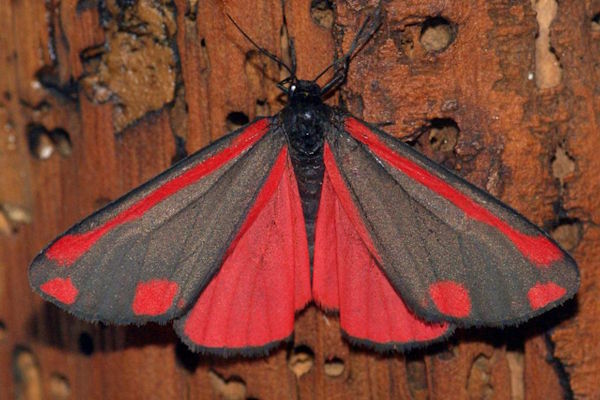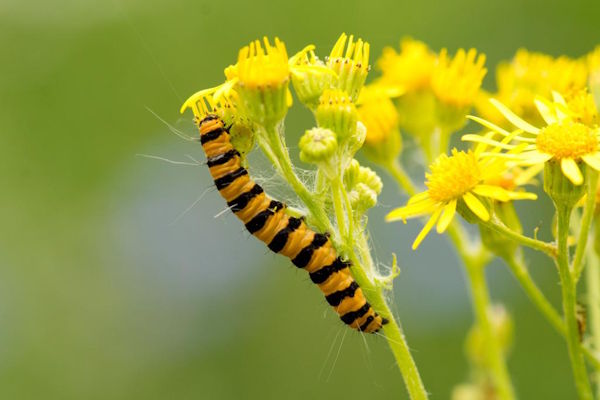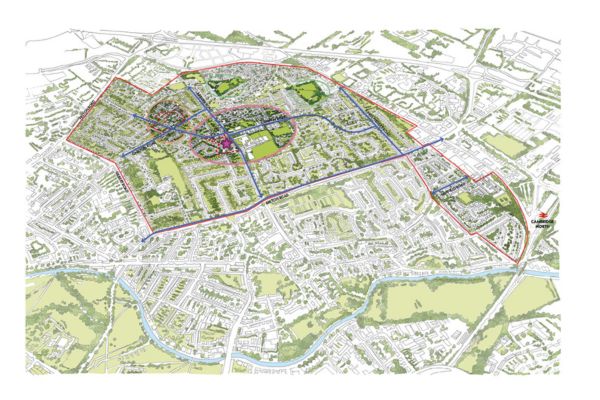This marker on the Cambridge Butterfly Trail is at Alexandra Gardens – see the map above.
The Cinnabar moth is one of the UK’s most eye-catching day-flying moths, flaunting bold black wings streaked and spotted with vivid red, its name drawn from the vibrant red cinnabar mineral.
Adult moths emerge from late May through to August, often fluttering across ragwort rich grasslands, dune systems and gardens.
Their caterpillars, equally striking, are vividly striped in yellow and black, feeding in communal groups that can strip ragwort bare. They gain protection from the plant’s toxins, which render both caterpillar and adult especially unpalatable to predators. This chemical defence is advertised through their dramatic coloration, and even the adults remain distasteful to predators.
Once more widespread, Cinnabars have declined, losing around 71% of their numbers over the past 25 years, largely due to ragwort removal and habitat loss.
Supporting them is as straightforward as allowing ragwort to grow; you might then see a spectacle of stripe-banded larvae and scarlet moths in your local wildflower patch.
For more information, please visit Butterfly Conservation’s page on this species – Cinnabar moth.





